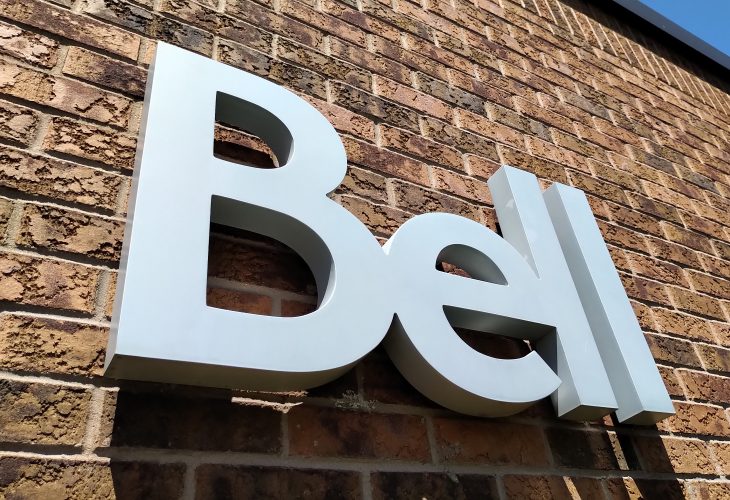
Assuming stability in regs, company to accelerate over $1 billion in capex in 2021 to expand networks
By Greg O’Brien
MONTREAL – While the Covid-19 pandemic shaped Mirko Bibic’s first year as president and CEO of Bell Canada (and the company’s 140th year) in ways no one could have predicted when he took the top job last January, the company’s first 12 months of fiscal results under his leadership look sound, all things considered.
Many other sectors did not weather the pandemic the way telecom companies have (as evidenced by the hit taken by Bell Media).
Fourth quarter operating revenue for the period ended December 31, 2020 was $6.1 billion, down 2.8% compared to Q4 2019. According to the company’s press release, “Covid-19 continued to impact consumer and commercial activity, including wireless product sales and roaming volumes, media advertising demand and business customer spending.” Service revenue declined 2.8% to $5.09 billion and product revenue by 2.7% to $1.01 billion. For full-year 2020, BCE operating revenue decreased 3.8% to $22.9 billion with year-over-year declines of 3.6% in service revenue and 5.5% in product revenue.
Net earnings, however, increased 28.9% to $932 million in Q4, which reflect the gain realized on the billion-dollar sale of Bell data centres to Equinix, lower year-over-year non-cash media asset impairment charges and decreased income taxes, reads the release. For full-year 2020, net earnings decreased 17% to $2.7 billion.
Bibic told financial analysts on the company’s fourth quarter conference call this morning he hopes (as we all do) with Covid-19 vaccines now being administered, things will get better soon and he expects 2021 to be a “reset year.” He also added leadership decided “there is no better place” deploy the cash from the data centre sale than to plow it into the networks and expand Bell’s footprint.
So, part of that 2021 reset will be the company’s other big announcement today, which is a harder push on its fibre and Wireless Home Internet rollouts through an investment acceleration of $1 billion to $1.2 billion over the next two years – which Bell took care to say is in addition to its typical capital expenditures of approximately $4 billion a year.
The company expects to spend about $700 million in 2021, which will include an “incremental increase of up to 400,000 more homes and business covered by fast fibre and rural Wireless Home Internet service,” which will increase new locations covered this year to as many as 900,000, for a total broadband footprint of approximately 6.9 million locations by the end of 2021.
The rest of the money will be spent on wireless, including the doubling of Bell’s 5G population coverage this year.
“If the decisions come out and they are materially negative, then of course it’s our job as a management team to stare that down and adjust as required.” – Mirko Bibic, Bell Canada
“With network leadership driving Bell’s momentum in the marketplace, BCE’s rock-solid financial position and a stable federal regulatory environment supporting spending on new network infrastructure, it’s the right time to step up with the unprecedented investment that Canada needs to build back,” said Bibic in the release.
During the conference call, the CEO said he feels confident the CRTC and government are now seeing things Bell’s way, which helped him make the “bold” decision to speed up its capital spending, an investment program Bibic said is “the biggest one in our history.”
With the wholesale internet rates appeal to the Commission (not to mention the Supreme Court leave request) and wireless policy (where MVNOs might be mandated) decisions still pending from the CRTC, Bibic told investors today, “I think we got some very good signals from the federal government last year, particularly in August when the Order-in-Council decision came out… and Minister Bains said at the time he was concerned the rates the CRTC had put in place would undermine investment in high quality networks,” he said. “I think that’s a pretty important signal… I have confidence that policy makers and regulators right now are going to appreciate the importance of a stable regulatory environment.”
However, “if the decisions come out and they are materially negative, then of course it’s our job as a management team to stare that down and adjust as required.”
During the call, the company did not mention the 250 job cuts (our estimate, since the company has not confirmed the total number) which have been announced at Bell Media through this week and since January 5. However, as mentioned above media took the hardest hit at the company in 2020. Q4 operating revenue decreased 10% to $791 million, and by 14.5% to $2.750 billion for 2020, due to decreased ad spending across all of its platforms.
Cartt.ca is continuing to follow this story and has more on the media job losses here.
For more on Bell’s Q4, please click here.



